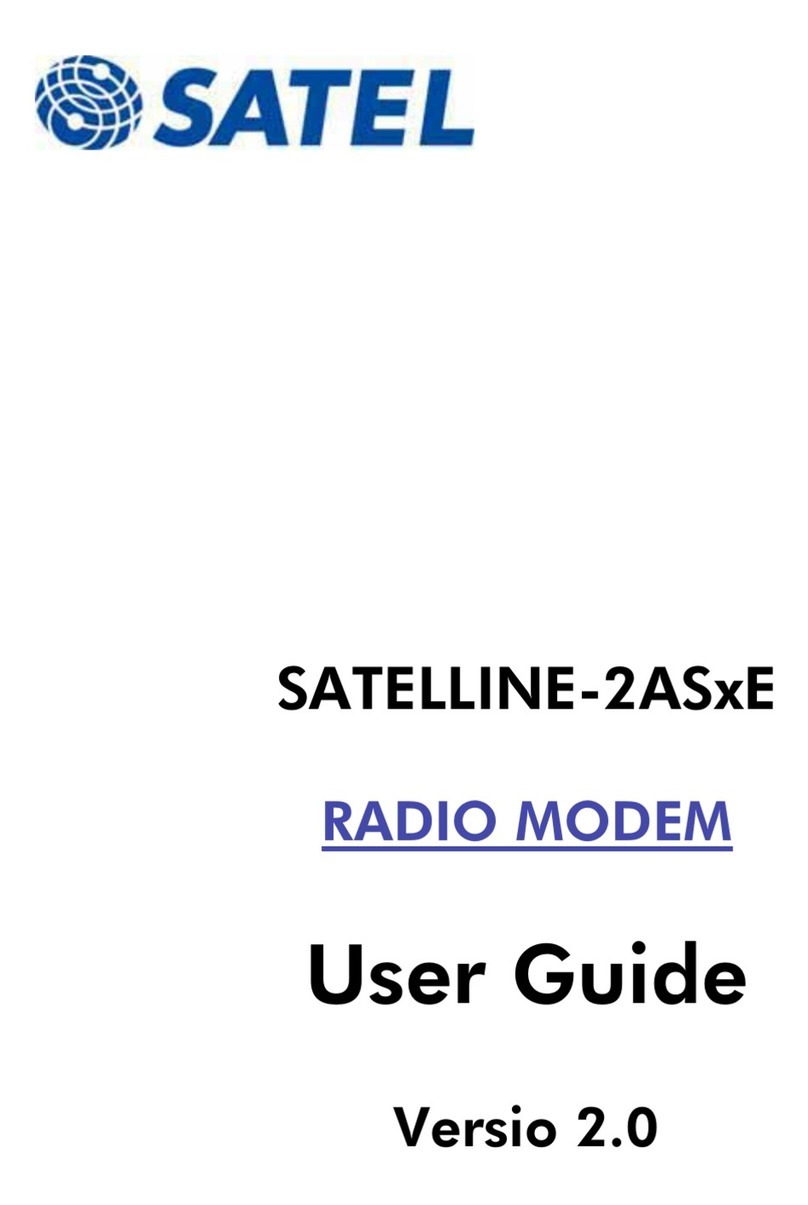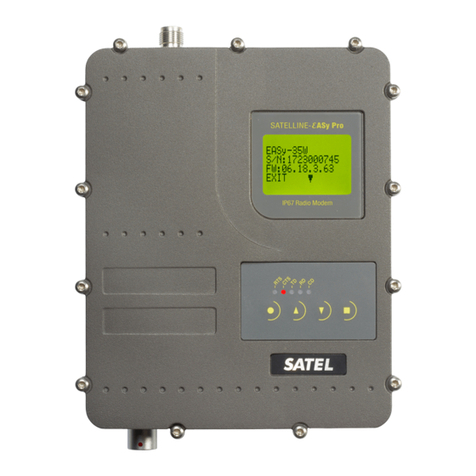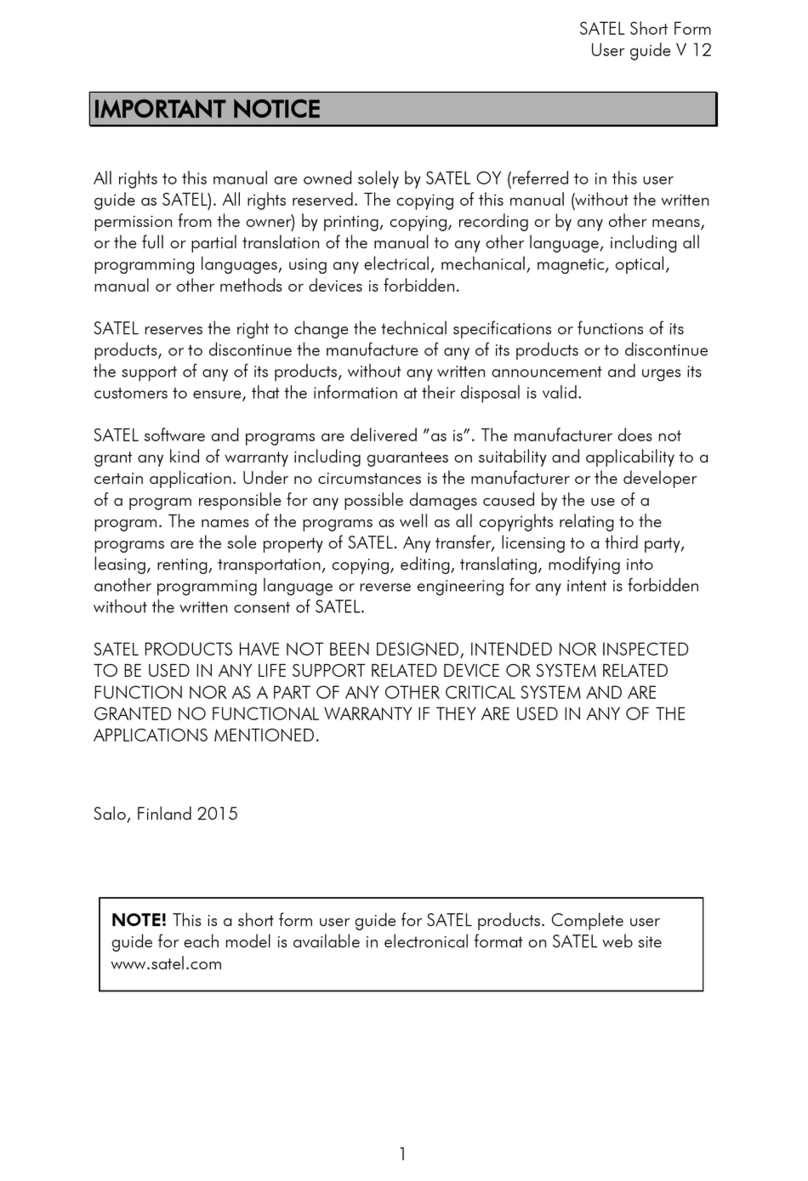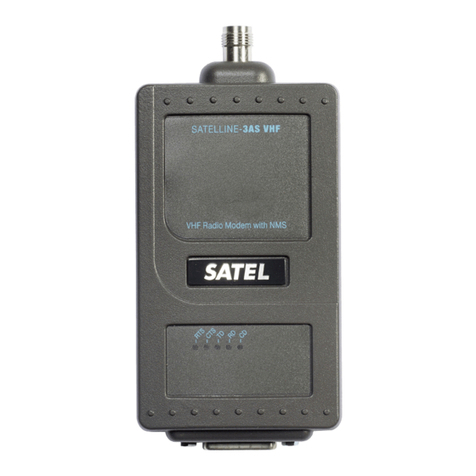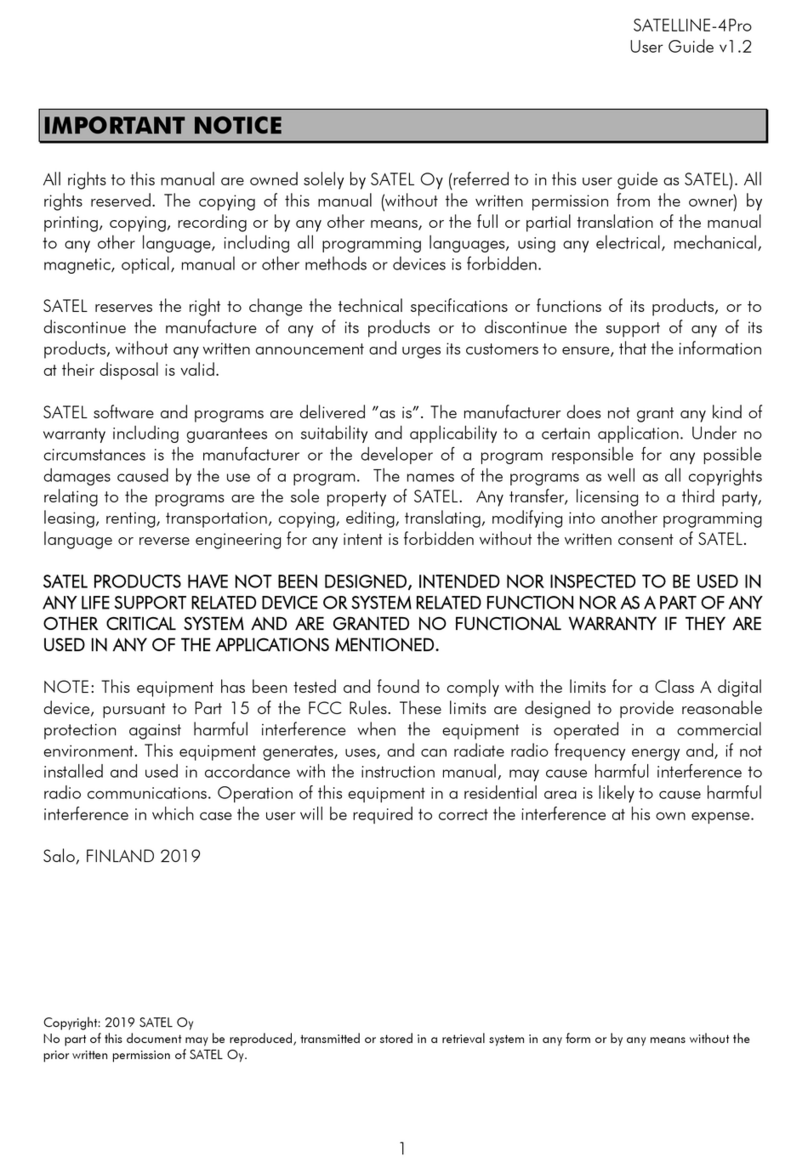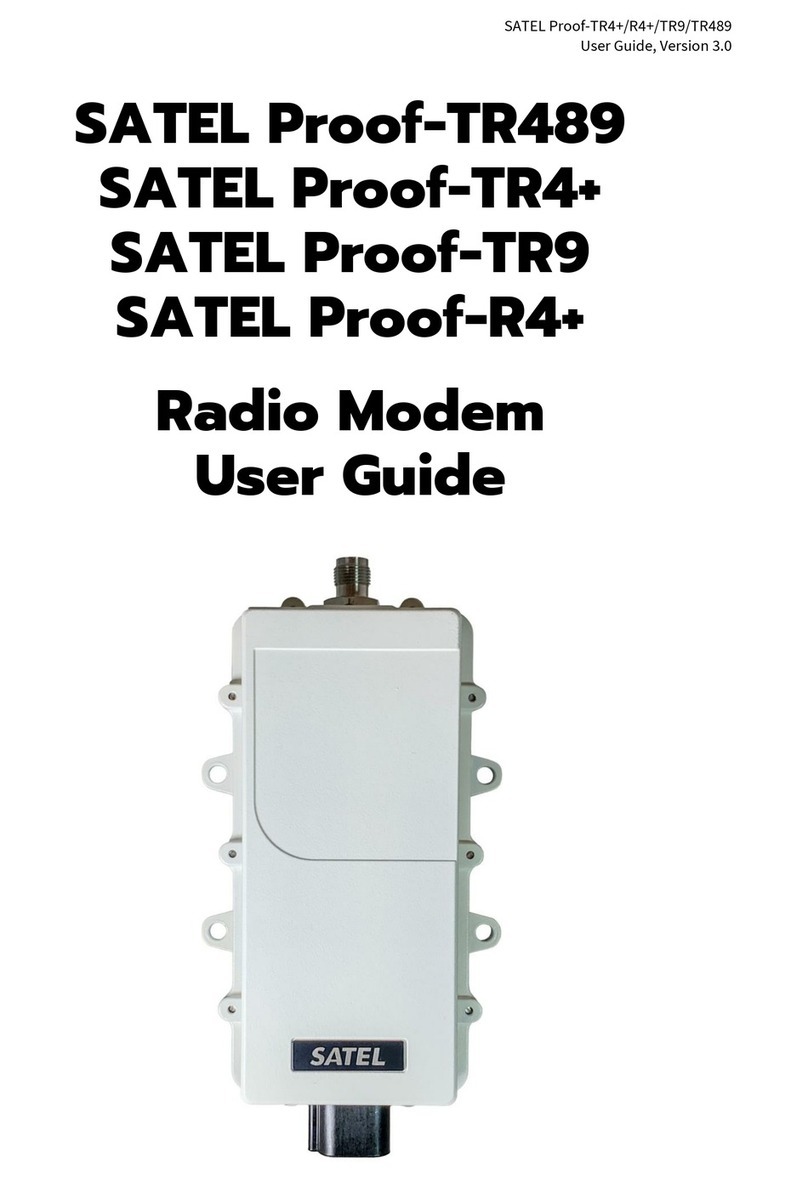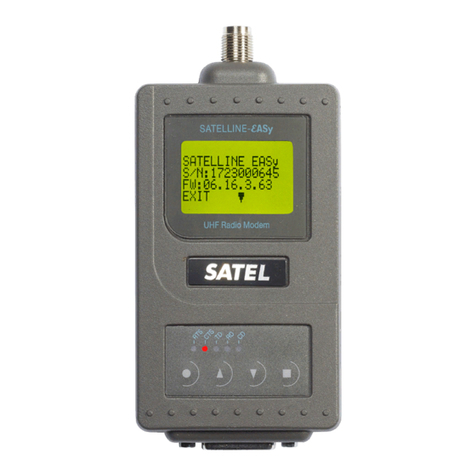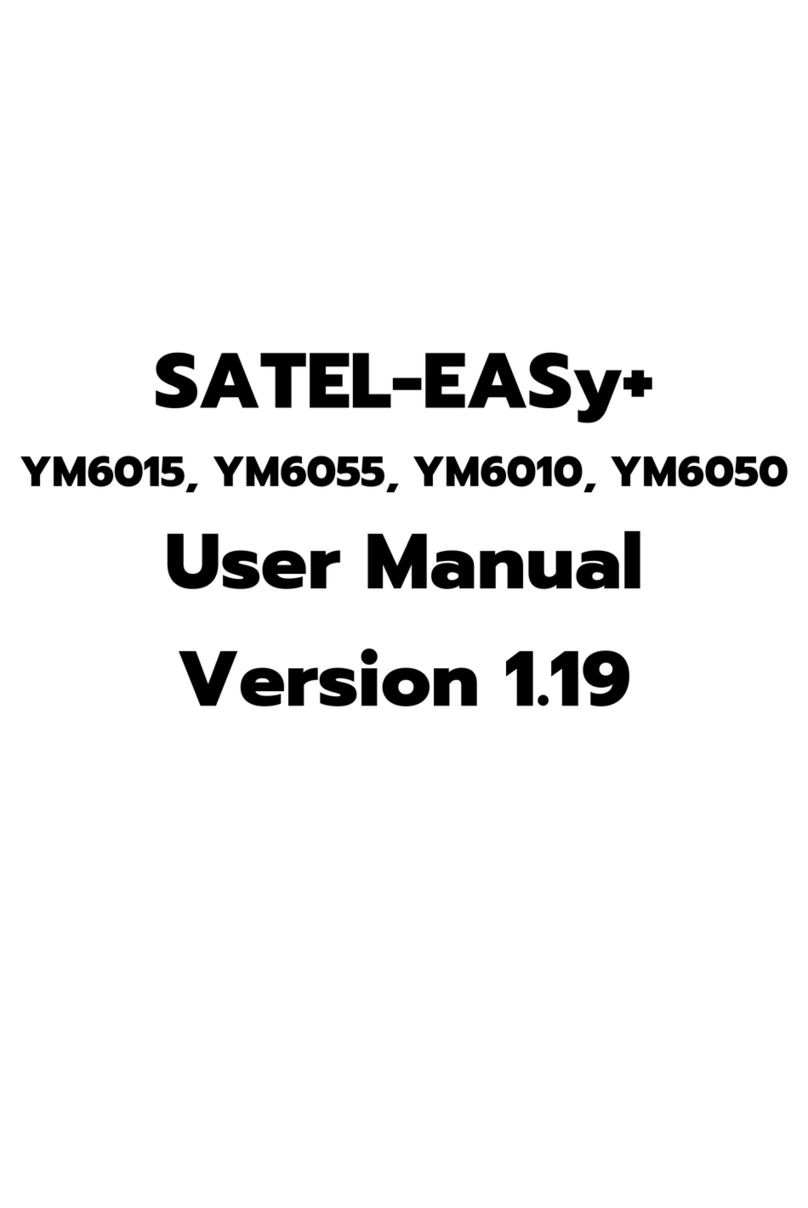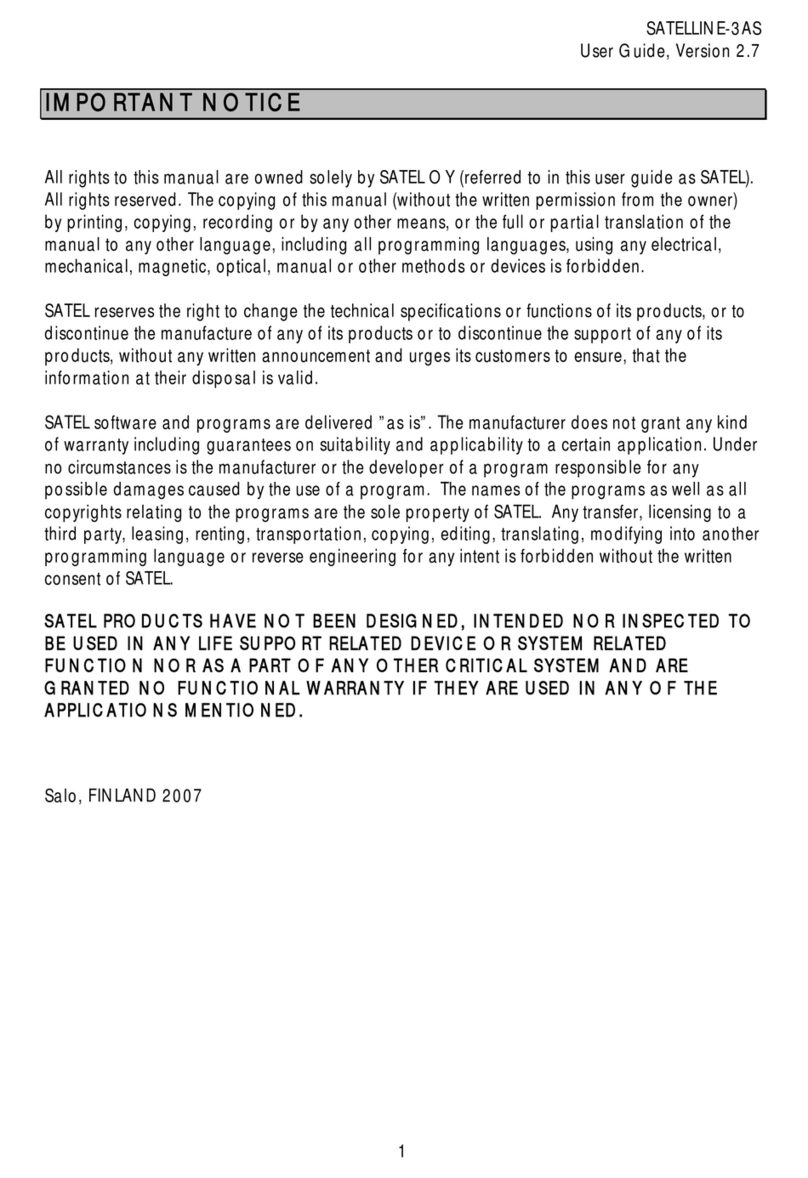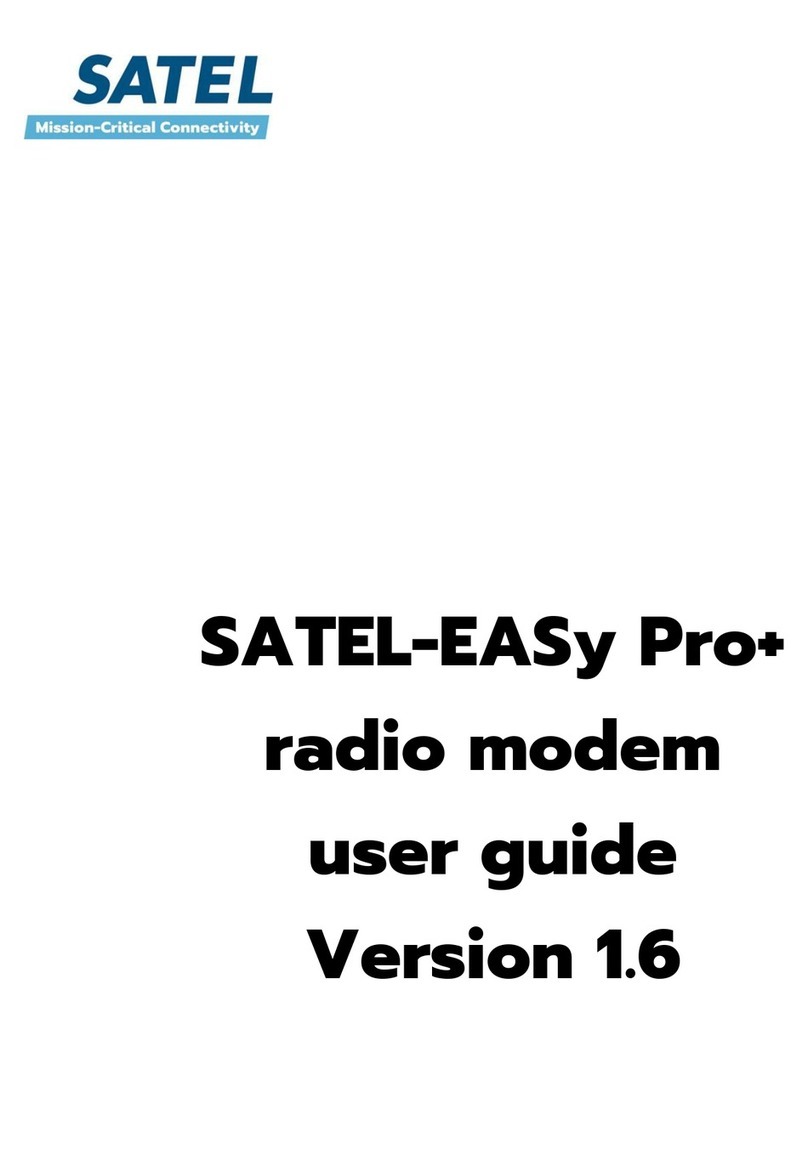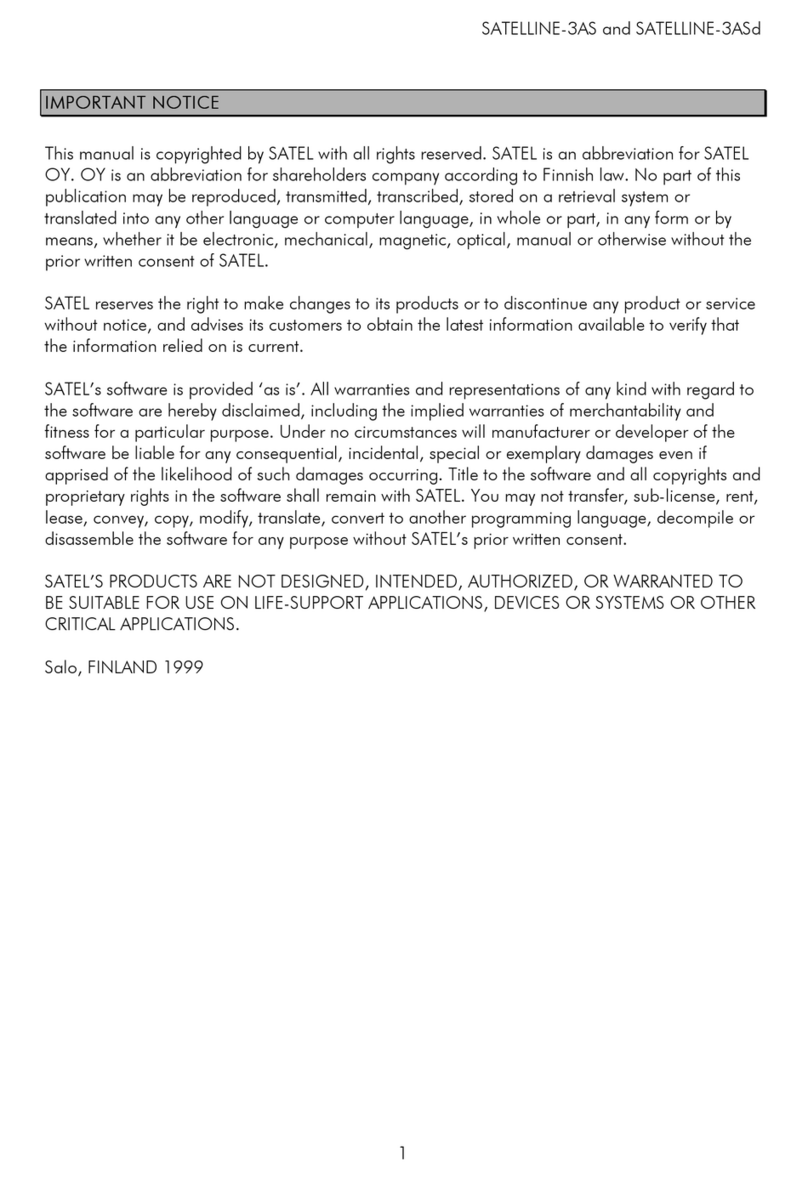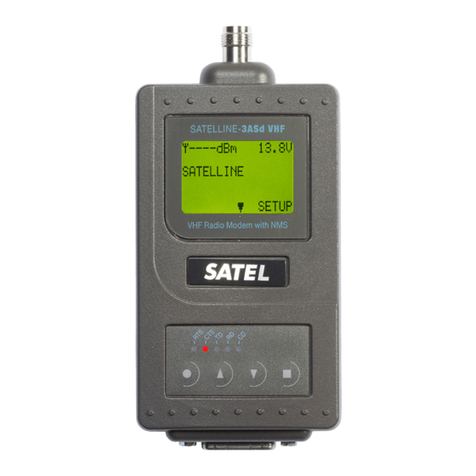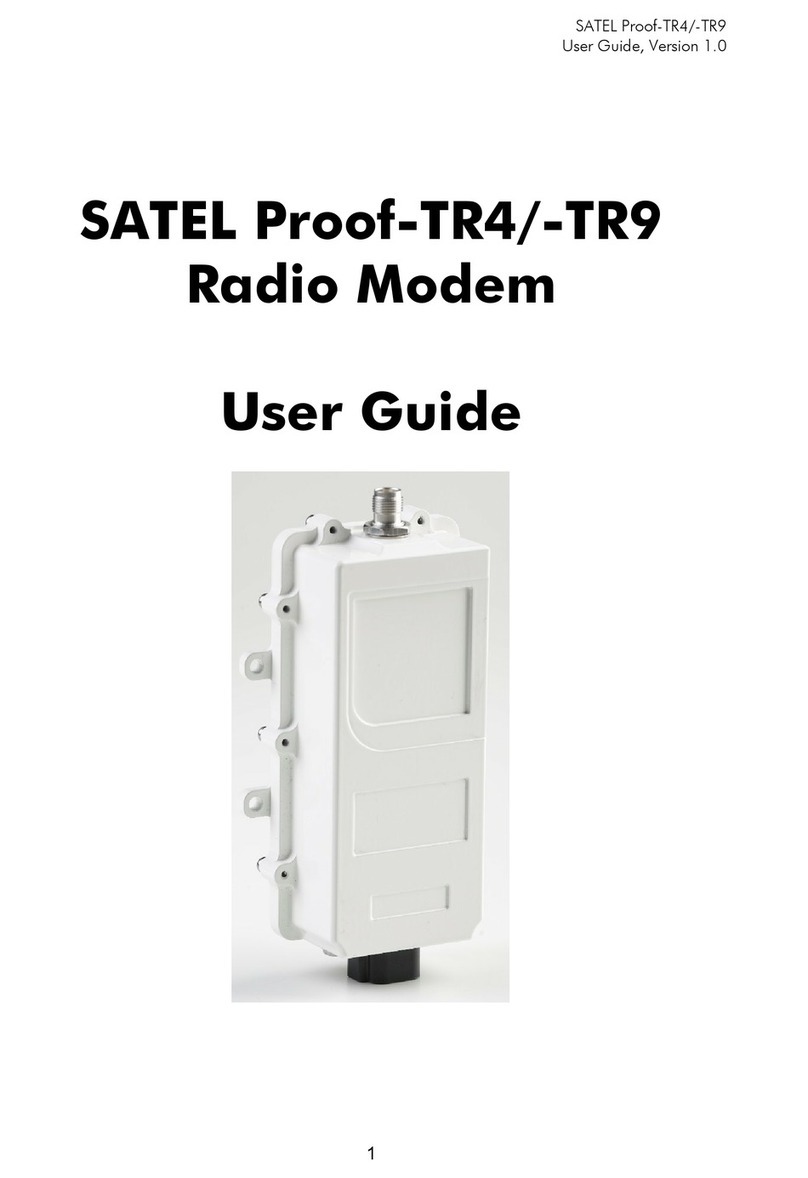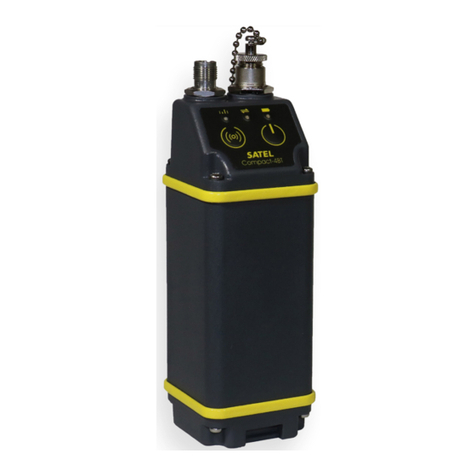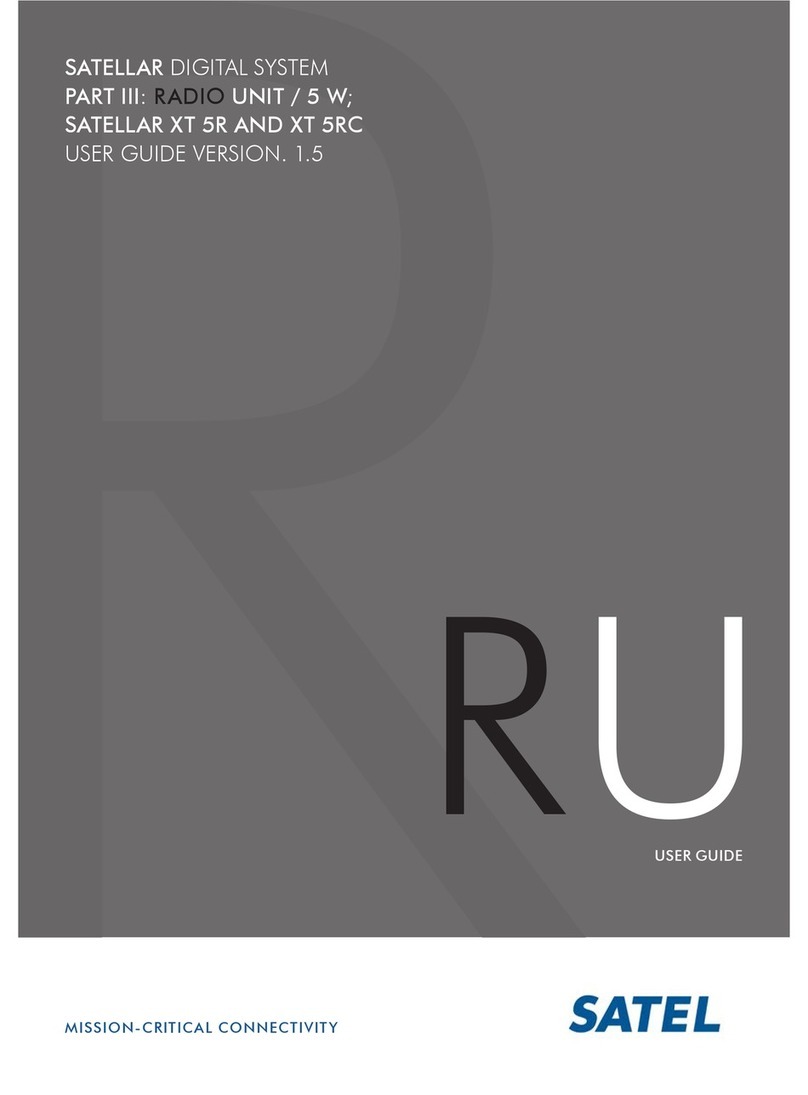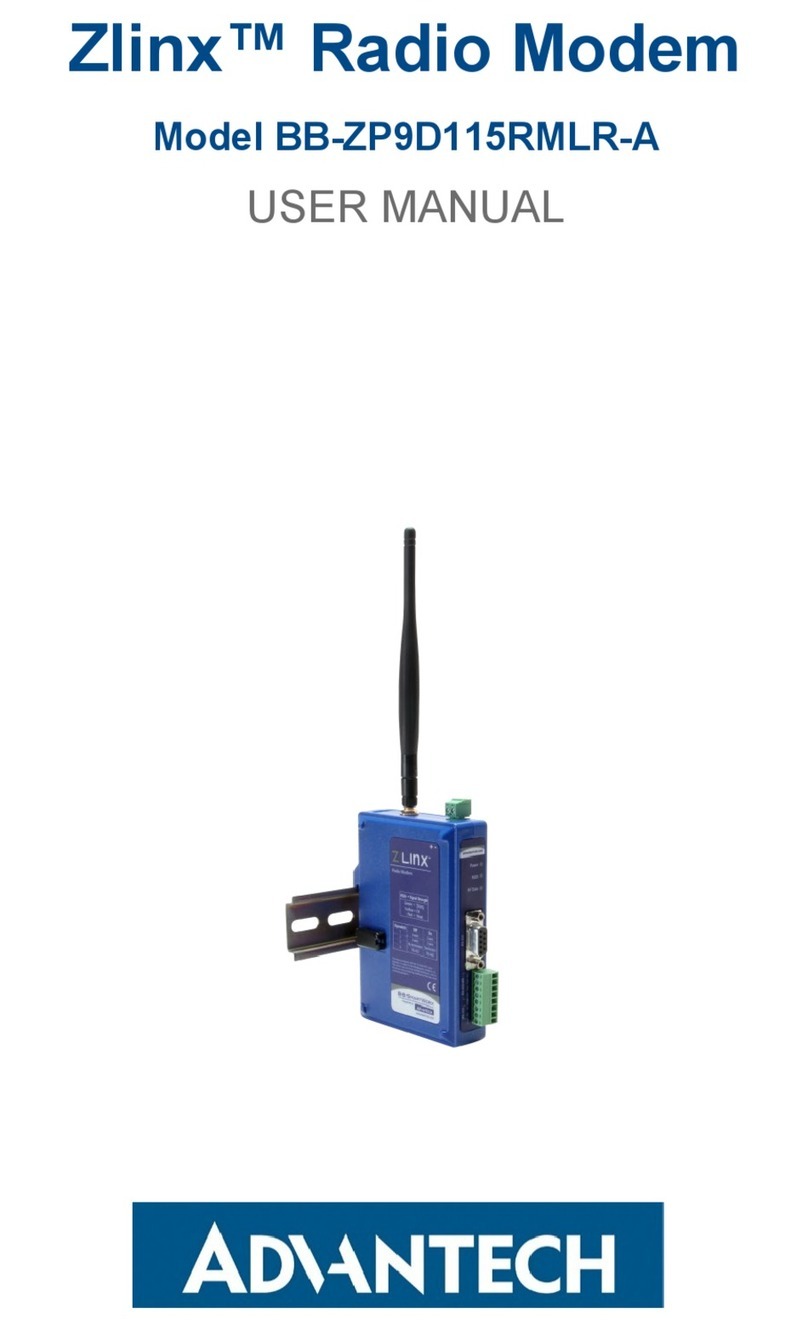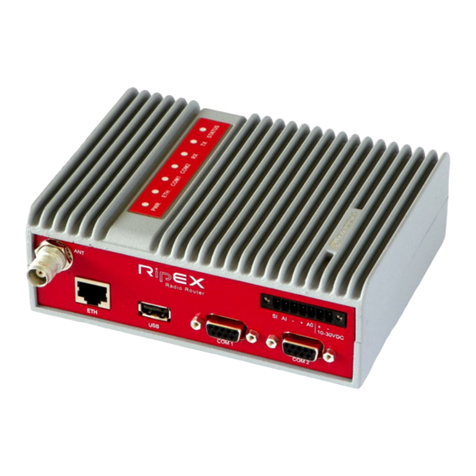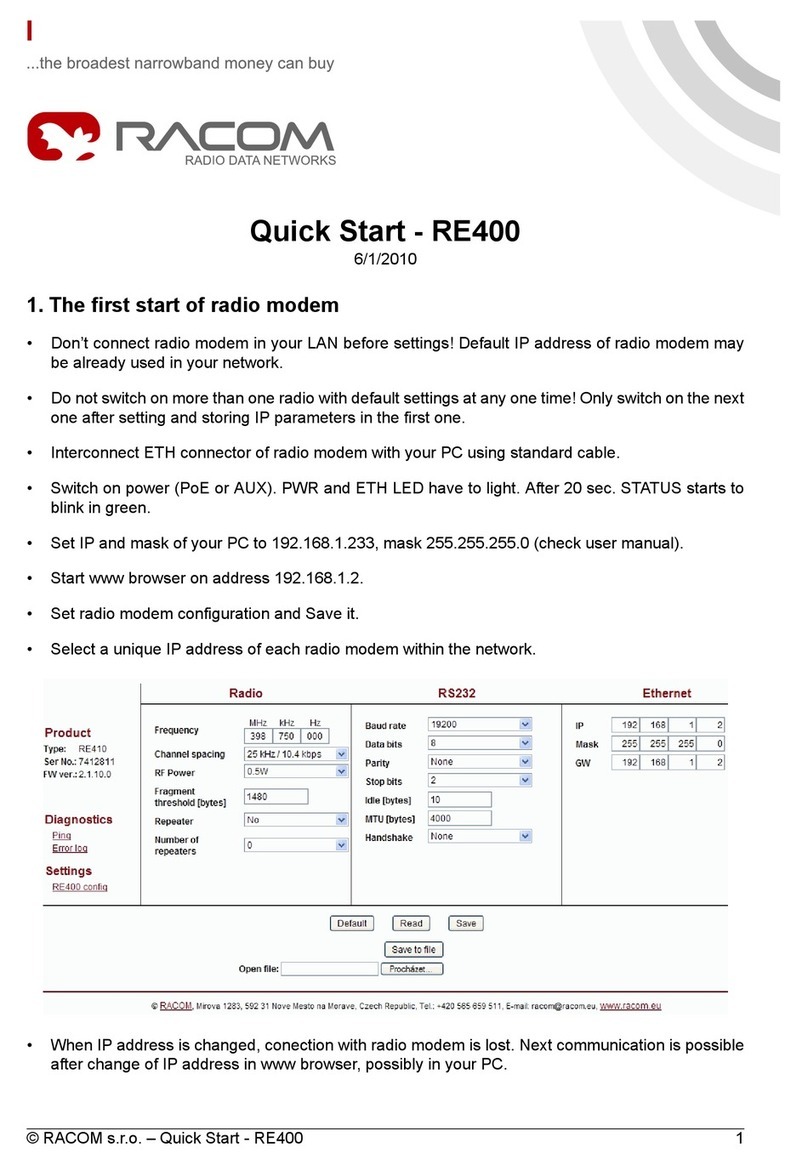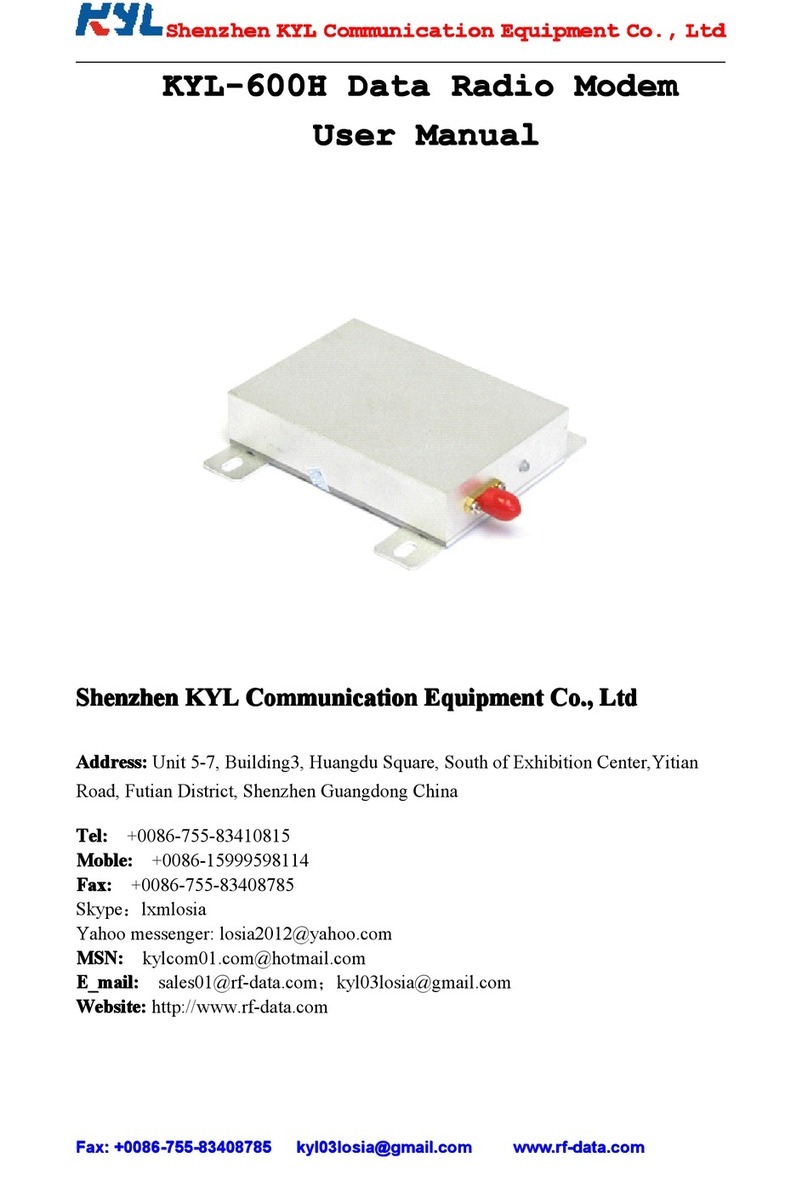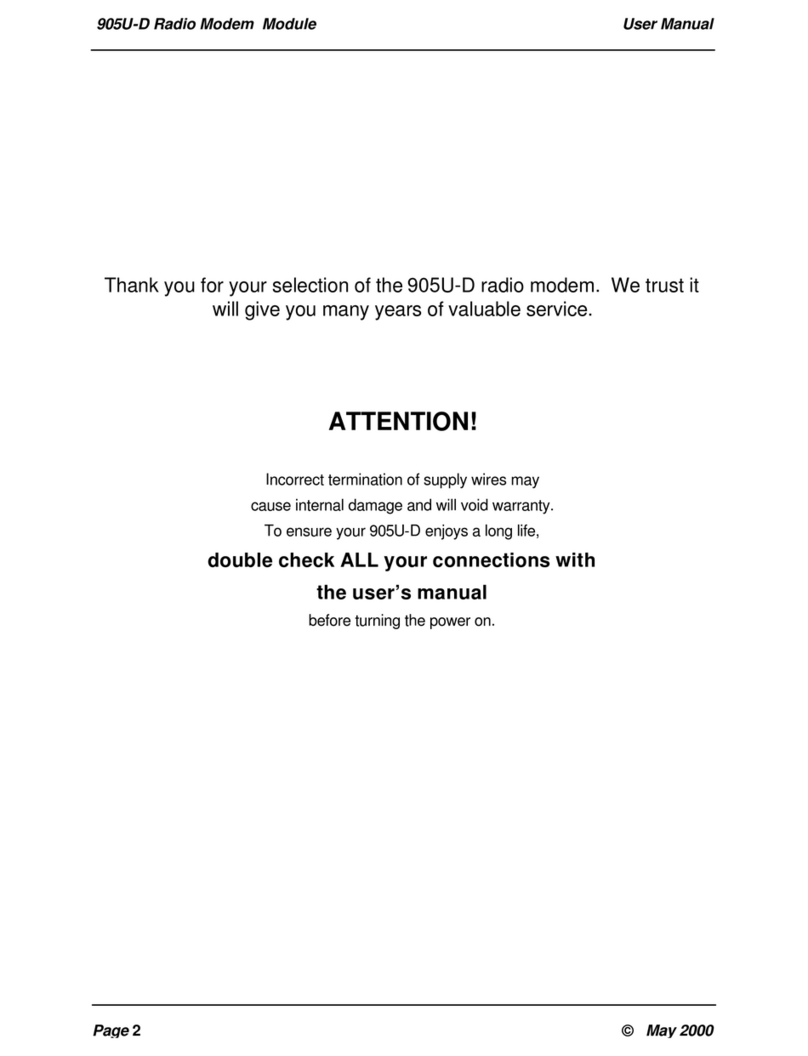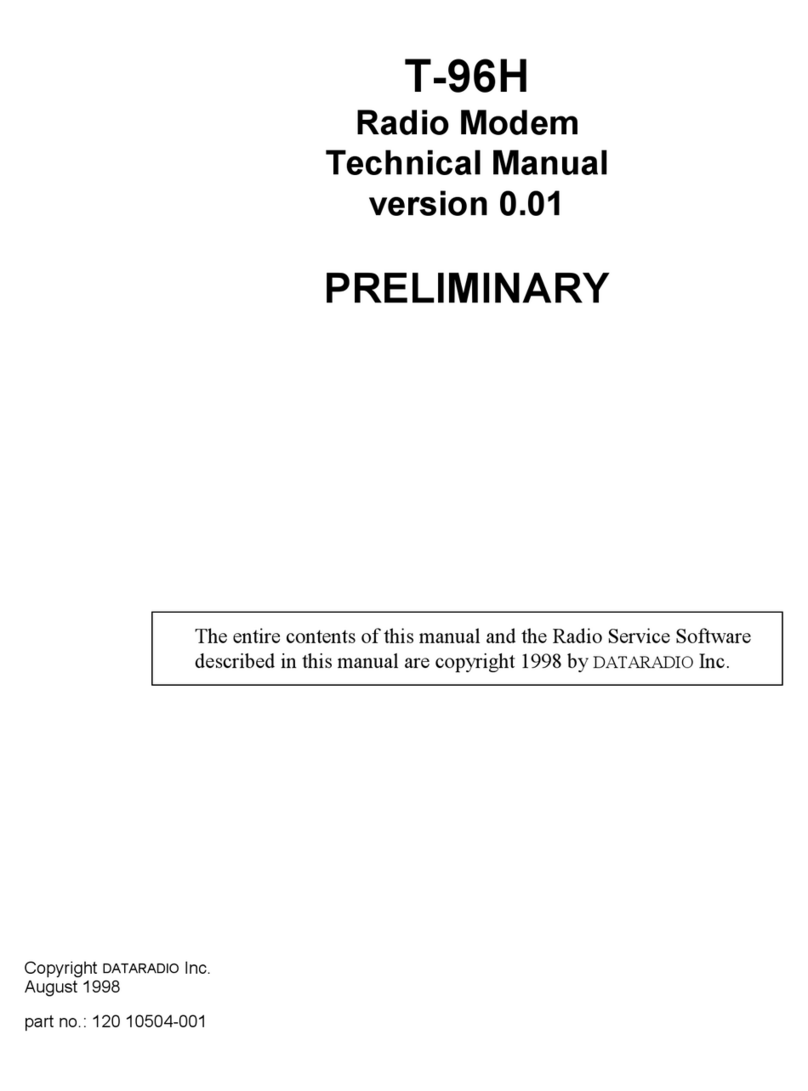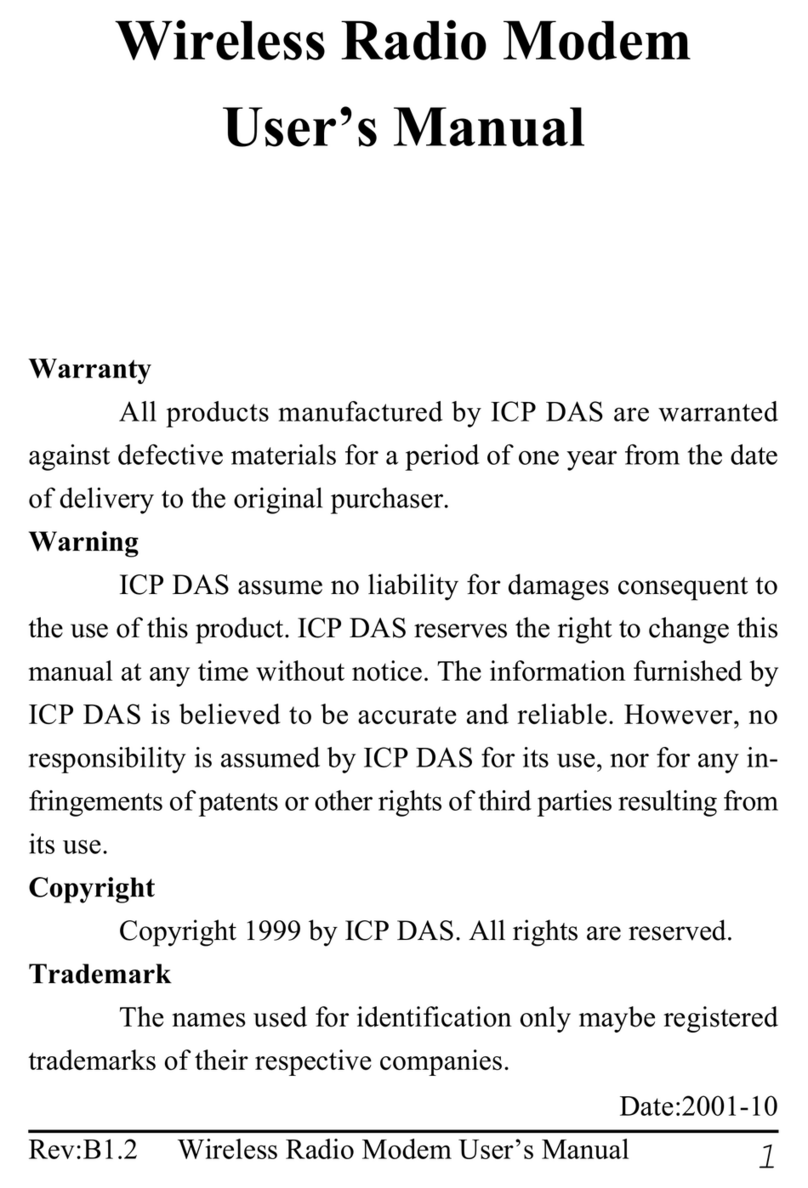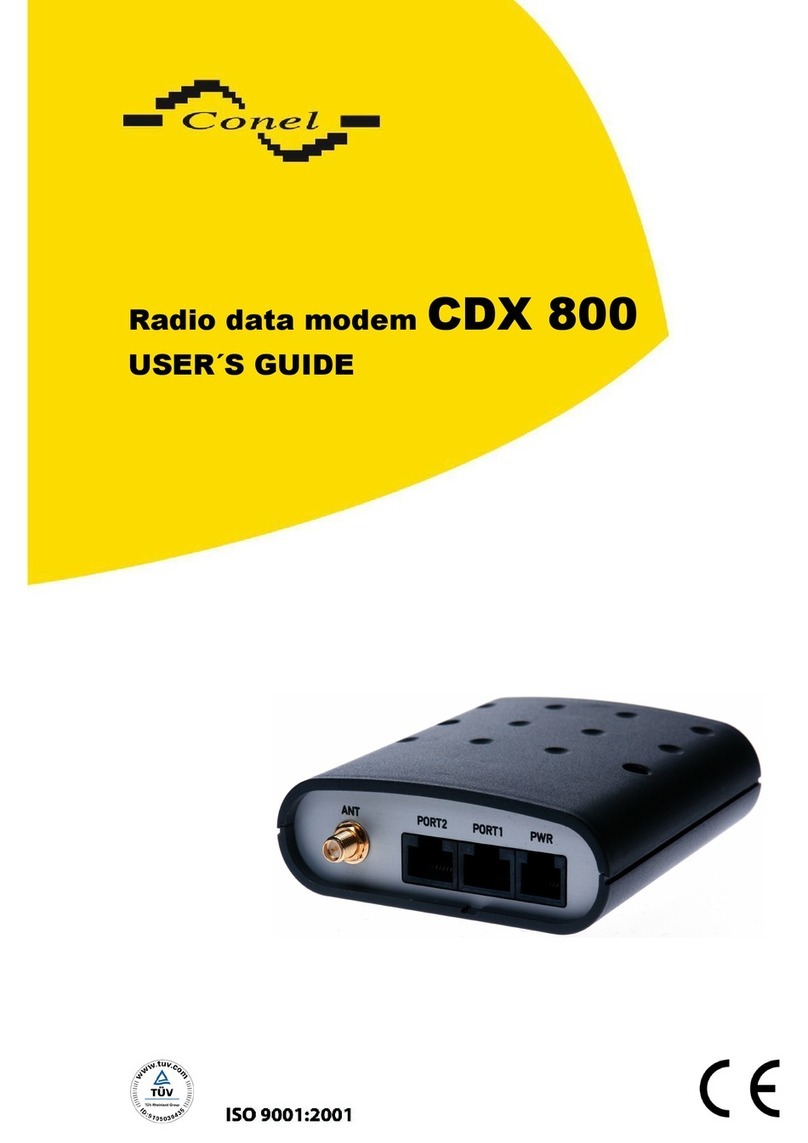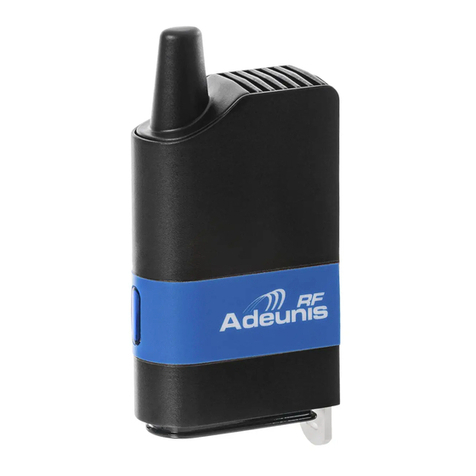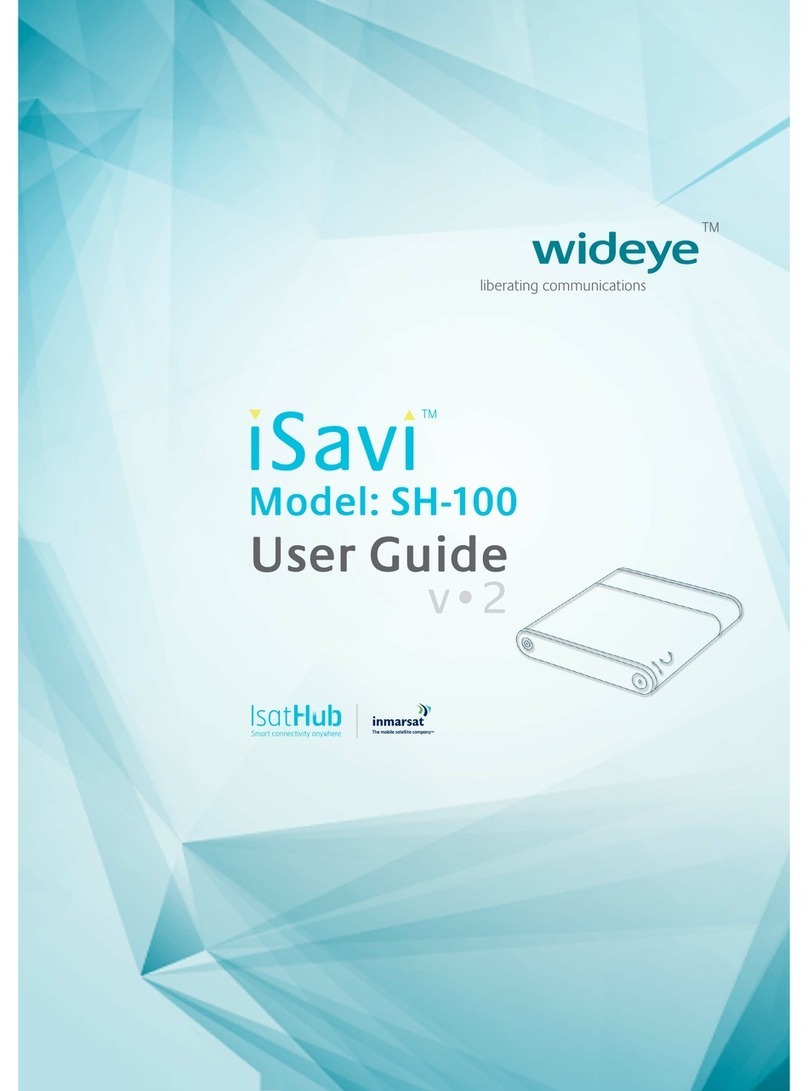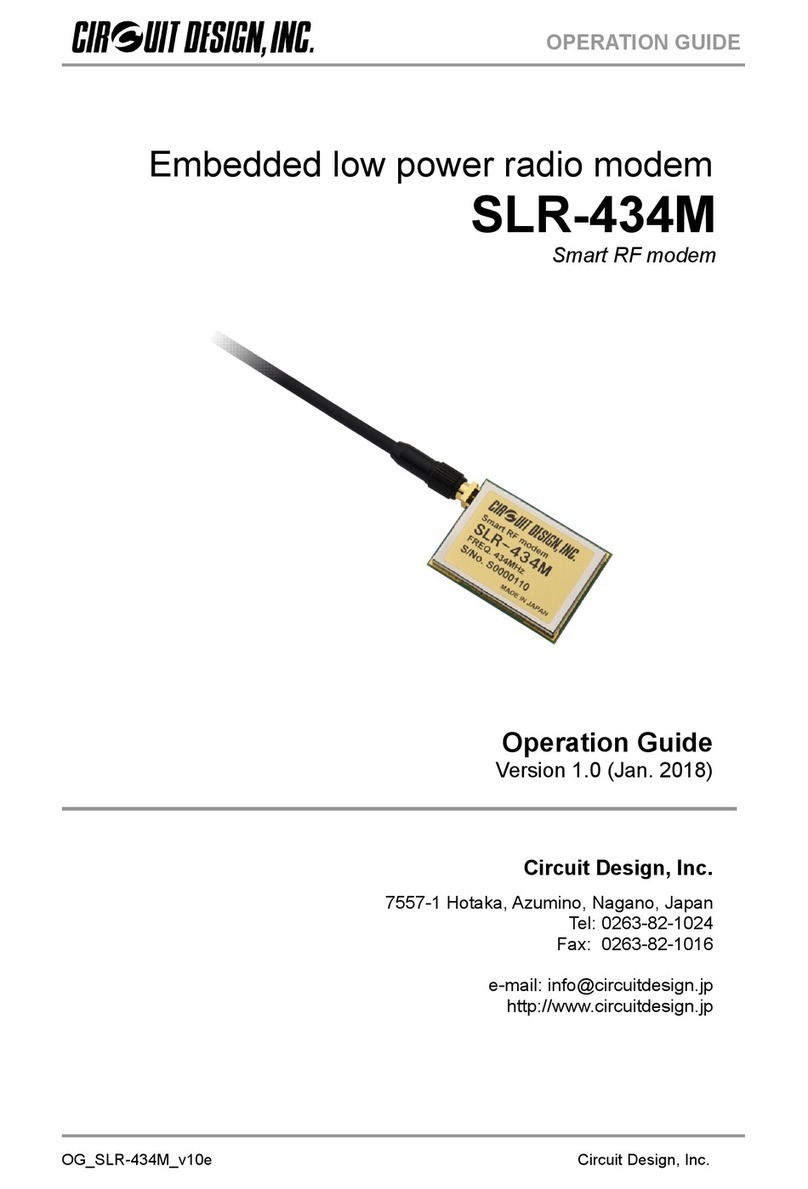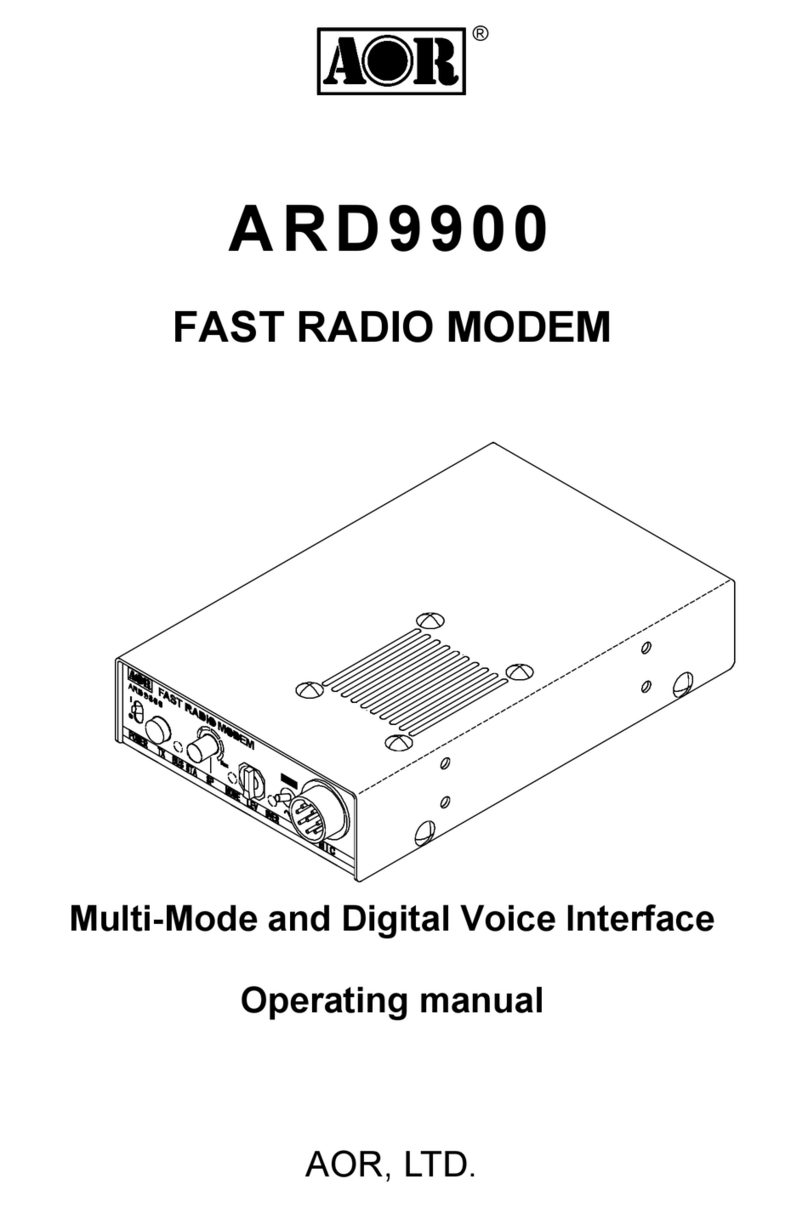SATELLINE-3ASd Epic Pro and Epic Pro 35W
User guide version 1.4
2
RESTRICTIONS ON USE
SATELLINE-3ASd Epic Pro is allowed to be use in the following countries, either on licence free
channels or on channels where the operation requires a licence. More detailed information is
available at the local frequency management authority.
Countries*: AT, AU, BE, BG, CY, CZ, HR, DK, EE, FI, FR, DE, GR, HU, ID, IS, IE, IL, IT, LT, LV,
NL, NO, OM, PL, PT, RO, RU, SI, ZA, ES, SK, SE, CH, TH, GB and US
SATELLINE-3ASd Epic Pro 35W is allowed to be use only in countries where FCC approval is
valid. It does not fulfil the ETSI specification.
WARNING! Users of SATELLINE-3ASd Epic Pro radio modems in North America should be
aware, that due to the allocation of the frequency band 406.0 – 406.1 MHz for government use
only, the use of radio modem on this frequency band without a proper permit is strictly
forbidden.
In addition project approvals available for IN, KZ and TW.
*codes of the countries follow the ISO 3166-1-Alpha-2 standard
WARRANTY AND SAFETY INSTRUCTIONS
Read these safety instructions carefully before using the product:
oWarranty will be void, if the product is used in any way that is in contradiction with the
instructions given in this manual, or if the radio modem housing has been opened or
tampered with.
oThe radio modem is only to be operated at frequencies allocated by local authorities,
and without exceeding the given maximum allowed output power ratings. SATEL and its
distributors are not responsible, if any products manufactured by it are used in unlawful
ways.
oThe devices mentioned in this manual are to be used only according to the instructions
described in this manual. Faultless and safe operation of the devices can be guaranteed
only if the transport, storage, operation and handling of the devices are appropriate. This
also applies to the maintenance of the products.
To prevent damage both the radio modem and any terminal devices must always be switched
OFF before connecting or disconnecting the serial connection cable. It should be ascertained
that different devices used have the same ground potential. Before connecting any power cables
the output voltage of the power supply should be checked.
